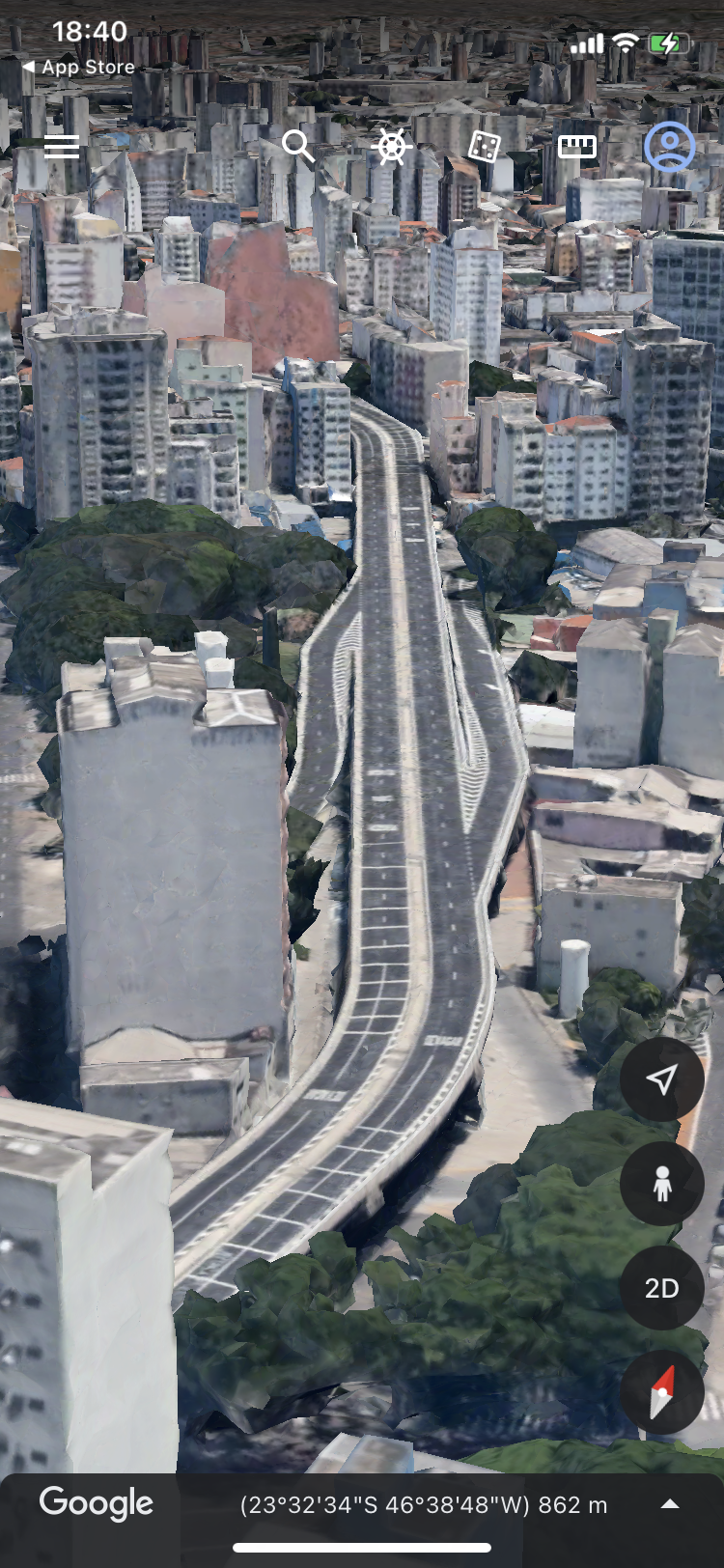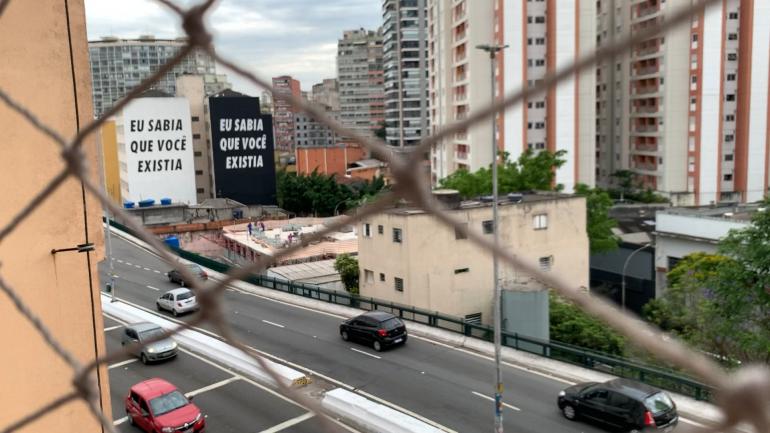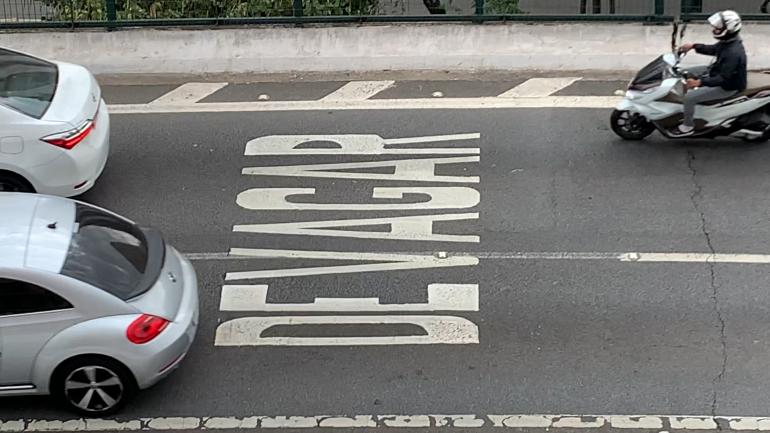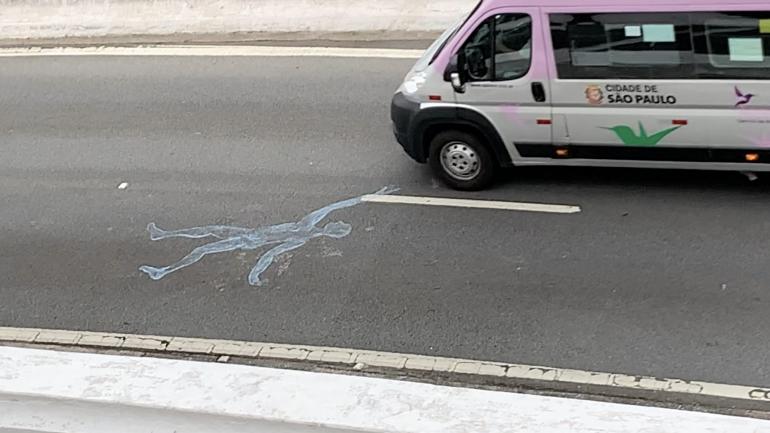
Photos by Vita Evangelista.
Observing the grounds from which I speak through the top-down, satellite gaze of Google Earth, the sight of the so-called Concrete Jungle reminds me of the enormous pile of trashed broken digital devices I came across while drifting around the streets the other day. The pile seems to be like an ever-changing, interactive part of an immersive art piece. Each screen reflects a different framing of the same environment, including its fleeting inhabitants. In this precise iteration, the performers are me and another witness, a guy that vigorously browses through the pile as if looking for anything that could still be sold.
Amid the techno-garbage, there is an open cardboard box with the word Metalma written on it. Although it passed unnoticed at first sight, the word had always been staring straight into my eyes. Actually, it was staring into the camera lens of my iphone XR, the device with which I photographed the event as quickly as possible. As I hear, the site is renowned for being a hotspot for cell phone theft and I’m both broke and uninsured. Whether wanting it or not, the device becomes my pair of eyes as it serves as a filter for my view of reality. It dictates the way I might perceive the world and register most of my memories, even at the level of the unconscious mind.

Photo by Vita Evangelista.
The entire experience is a spherical reflection in a spiraled and confrontational mirror. Perusing through the pile of dead devices, the other guy and I are two opportunistic and hungry sci-flies. The world around us seems to dissolve. There’s a chance we might have entered a parallel world which is defined by what Hito Steyerl calls bubble vision: a sort of meta-reality designed in the orb-based aesthetics coming out of VR and 360 degree technology. Made by and for spherical lenses and points of view, Steyerl contends that the bubble vision effect places the viewer at the center of the virtual world while it is also not there. Main character of any given experience within that setting, a disembodied gaze is in total control of that reality. Yet, rendered translucent, the body is missing from the scene, apace with the world around it. Whatever sense of social responsibility they could have had might follow.
Is it possible that the digital waste scene has been programmed, too? Then, who might be arranging all of this? I couldn’t help but see a link between the feel of a sort of omnipresence and Hito’s mention of Salvator Mundi (Savior of the World) — a painting by Leonardo Da Vinci which depicts the bust of a white Christ. Holding a glass sphere on the palm of his left hand, which symbolizes the Earth, he raises his right hand in blessing. I couldn’t help but think that, having only been discovered about a decade ago, there might be a slight chance that the painting could have traveled through space-time. I couldn't help but think that physical reality might have also been staged; Perhaps hacked; Perhaps neither; In any case, I know I’m being watched by multiple surveillance cameras. I couldn’t help but think of humanity as the animated, actual slurry waste of digital capitalism.

Photo by Vita Evangelista.
Looking at the pictures on my cell phone later on, I slid my fingers across the screen glass, squeezing out the image in order to zoom into the word: Metalma. It seems to be a neologism made out of the combination of the prefix meta and the noun alma. Deriving from the Greek etymology, meta means after or beyond and is commonly used as an indication of self-reference. Furthermore, alma originates from the Latin anima and it appears in several different contexts both historically and worldwide. It usually refers to an indeterminate force that animates living creatures (human and beyond) or even life itself. Meaning soul in English — the overreaching, imperialist language in which I now write this text — it is said that almas might get lost and drift away from their host bodies once they’re as dead as the trashed devices piled up on the asphalt. Perhaps the cardboard box has been opened so that a lost soul could drift freely towards new worlds; Perhaps it still sits quietly in there for it has forgotten how to be free; Perhaps it got trapped into the loop-holes and crossroads within the metaverse orb.
On the other hand, the Google Earth point of view of São Paulo’s city center also reminds me of an image I came across online which illustrated what a compost pit could look like at a further stage of decay. In this case, not only the effects of Western decadence, but also the actual reference to the multiplicity of life forms that are invested in rotting processes make a lot of sense to me. Yet, back then, it turned out that I mindlessly acted out according to the crumbs of Western decadence that have been imprinted into me: by reducing the entire, complex scene to a single digital image. That seemingly survival, human urge to image-capture everything ever experienced. It is definitely true that, under different capitalisms, the ways in which certain (human and beyond) life forms are systematically deemed disposable also reflect the ways in which we produce, consume and dispose of digital images. Current metropolitan realities seem to always be readily made for a social media post.

Photo by Vita Evangelista.
Looking right outside the only window of the claustrophobic apartment I’ve just moved into, I see a fragment of the humongous, elevated highway that cuts across São Paulo’s city center. The highway functions as a rhizomatic bridge – a sort of monstrous body that is stretched beyond its physical limits, reaching out for different sorts of socially contrasted worlds. It transports human and nonhuman life across space-time, in upbeat and noisy steps that are rhythmically paced by heavy loads of carbon dioxide emission: neoliberal capitalism at its worst, coughing out illy and overtly worried pursuits of profit.
Confronting the statement that everything is connected to everything, offered by the brand of holistic ecological philosophy, Donna Haraway’s infamous spider Pima Cthulhu has risen from actual deep webs to teach that Nobody lives everywhere; everybody lives somewhere. Nothing is connected to everything; everything is connected to something. Inspired by the arachnid and a myriad of other creatures, Haraway contends that a tentacular way of thinking might provide an insightful approach to matters related to planetary destruction.
Different from the aforementioned spherical, orbital worldviews addressed by Steyerl, tentacularity draws from the threads of interspecies connections, attending to the multiplicity of critters that inhabit the Earth as a powerful source of knowledge.
Aiming to de-center the anthropo from discussions regarding the current geological age, which has since the 1980’s been regarded as the Anthropocene, she suggests Chthulucene as a more suitable address; as well as humusities instead of humanities; and humus instead of homos.
With this in mind (and body), it doesn’t seem to be a coincidence that the highway outside my apartment window is popularly known as Minhocão, which literally translates into Big Worm. If you think of the chaotic, complex and layered realities of the city as a compost pit, I might as well become a soil grain; a larva; or perhaps a single worm egg – all of which, despite the somewhat spherical egg shape, would not have so much of a chance of surviving nor purpose in existing in complete isolation. Regardless of what I would shapeshift into, I’d surely need to collectivize.
However, in the face of continuous transition, such different life forms are ceaselessly translated, shifted and deformed according to whichever context they end up being immersed in. Larvae, dust, human bodies, soil, bugs, souls, animas, meta-anything, basically… the meaning attained to things and beings is always unrigid as meaning couldn't be birthed if not relationally.
The complex experience of being a light skinned, transgender Latin American who has also been a migrant in northern Europe for the past decade, taught me that my body gets attained different meanings, depending on the very different social, cultural and geopolitical contexts it inhabits. Having always been categorized as a non-white latin person while in Western Europe, in Brazil I am socially perceived as white. Reflecting Sartre’s concept of the gaze of the other as constitutive for the process of the formation of self-consciousness, parts of this and other experiences have provided me with the (perhaps post-traumatic) ability to consciously disembody one’s own gaze: to allow for consciousness to float away from the body in order to see through multiple perspectives; to perceive oneself through different worldviews; to strange oneself; to self-other; to not immediately trust what seems to be taken for granted in any given cultural and social context, specially at times when that derives from the socio-political systems which insist on privileging only a few, in detriment of the humanity of so many others.
Regarded as an empty signifier, whiteness is always a translucent, invisible, and hollow concept. Sly, it wants to disclaim responsibility for self-identification for its hegemony is kept most powerful when it remains unseen. In order to dismantle white supremacy and deconstruct white racial dominance, the invisible must be made visible and the unmarked must be marked. It is past the time that whiteness be othered.Frankenberg, Ruth. White Women, Race Matters: The Social Construction of Whiteness. NED-New edition, University of Minnesota Press, 1993.
An analogy of this could be the diptych graffiti work on the left hand side of my window view. Facing the highway, two high buildings are painted with the same sentence, one written in black font onto a white background, and the other in white onto black. Forming a sort of yin yang, the sentence reads: I knew you existed.By the artist Felipe Moroni

Photo by Vita Evangelista.
In the way it speaks to me, the work seems like a homage to the recognition of people’s humanity, in reference to the embrace and awareness of social difference. Graffitis such as this one are seen throughout the entire city center. Although they might intend to inspire an unprejudiced and more just worldview, it is impossible to ignore the contrast that so deeply slices the reality between that sort of world picture and the gruesome dynamics that actually delineate life on its surrounding grounds.
Whereas access to safe housing should be a constitutional right, the real-estate bubble won’t stop inflating while the homeless population keeps increasing in numbers. Another cruel reflection of late capitalism’s bubble effects, homelessness hasn’t been so imminent for the great majority of Brazilians in a very long while and this is doubtlessly also a racial struggle. The city seems to be dressed for a party to which most of its population won’t ever have a chance to get invited. It is a party thrown by and for the very few and that VIP list must be deleted.
Bringing back Donna Haraway’s account of tentacular thinking, she asserts that the tentacular are not disembodied figures, but that they are also nets and networks, it critters, in and out of clouds. Tentacularity is about life lived along lines — and such a wealth of lines — not at points, not in spheres.
Could Haraway’s lines be able to pop these bubbles, or perhaps turn points into knots?

Photo by Vita Evangelista.
It’s 9pm and I am looking outside the apartment window again. The highway is already closed for the night and the Big Worm is quiet. In sans serif, white capital letters, the word DEVAGAR is painted onto the piece of asphalt I see when I look through the cat safety net that is installed on the window. Translated literally, it would mean to slow down, but it could also be read as DE-VAGAR, which would then be referring to something or someone that is assuredly made for wandering. Alternatively, it could as well be read as DEVA-GAR, which in online vernacular language would form a sort of command for wrath.
Sometimes the same word seems to be a reminder to stop and take a deep breath. Sometimes it is a plea for rage. Sometimes it seems to be an ode to tenderness. At other times it just urges me not to stop moving on.

Photo by Vita Evangelista.
A few meters to the left of this word, an almost translucent human figure is painted in sky blue. The body seems to float on the driveway, horizontal and diagonally. It could also be swimming against the traffic in this disrupted sort of river; Or freely dancing by oneself while all others seem not to manage stopping the exhausted choreography. It is raising its left arm until the point of reaching a line which is painted in white onto the asphalt. Raising its index finger, it touches it. Remember Da Vinci’s painting, that time-traveled straight from the past into current times, which depicted a sort of white savior Christ raising his right hand in blessing a glass orb? This blue critter does not do that.
It is also not creating anything new, in case you think I’d suddenly come up with a reference to Michelangelo’s painting of God creating Adam. No. It rather seems to be caressing one of Haraway’s lines. It just cares for what is already here.
- 1197 views






Add new comment